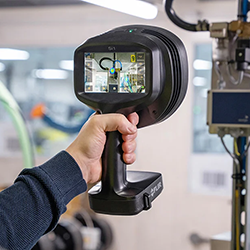A Turn Toward Manufacturing Perfection with CNC Digital Twins
5 Advantages of Using EtherCAT for Motion Control
Common Reverse Logistics Challenges
Performance Solutions by Milliken - Safety Bootcamp
How LiDAR Is Paving the Way for Industry 4.0
AUTOMATED POST PROCESSING SOLUTIONS: PROS & CONS
HP 3D Printing at IMTS 2022
CIMON at IMTS 2022
Zeroing In On Your Target Audience With Your Manufacturing Content
Post Processing in 3d Printing - the Key to Viable Production Outcomes
Shop Floor Automations at IMTS 2022
How To Choose A Suitable Electric Motor For Your Application
What are the Best Parts of a Manufacturing Plant to Automate?
Mattel Innovates the Toys of Tomorrow with MakerBot 3D Printers
Smart Logistics Whitepaper
Records 556 to 570 of 1915
First | Previous | Next | Last
Engineering - Featured Product

